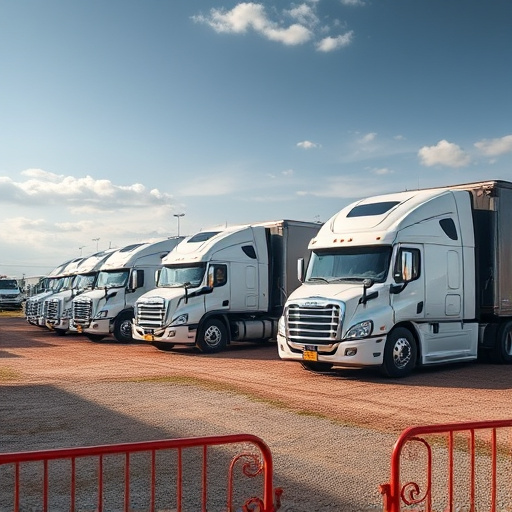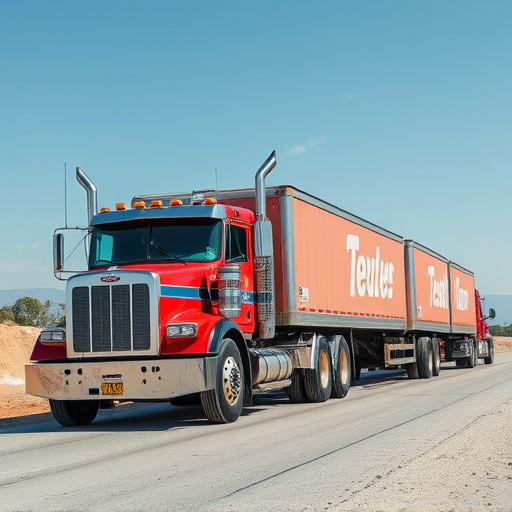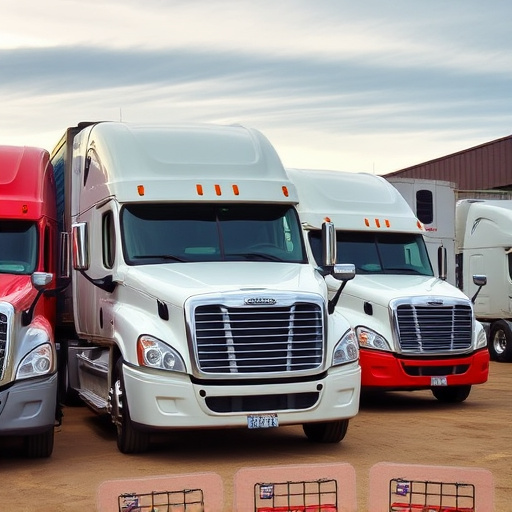Installing a new truck battery requires understanding your vehicle's needs (make, model, year) and choosing between lead-acid or lithium-ion types. Match amp hour (Ah) rating for optimal performance, consider mounting location for safety/access, inspect area before installation, prioritize safety when removing old batteries, secure new batteries firmly, ensure tight electrical connections, perform crucial post-installation checks for safety and reliability.
“Optimizing your truck’s performance starts with a robust and well-installed battery. This comprehensive guide offers essential tips for tackling the process yourself. From understanding your vehicle’s power needs to securing connections for peak efficiency, we cover every step. Learn how to select the ideal battery size and type, prepare the installation site, safely remove the old unit, and ensure optimal performance with final checks before starting the engine. Elevate your truck’s reliability with these top tips for successful battery installation.”
- Understanding Your Truck Battery Requirements
- Selecting the Right Battery Size and Type
- Preparing the Installation Location
- Removing the Old Battery Safely
- Mounting the New Battery Properly
- Securing Connections for Optimal Performance
- Final Checks Before Starting the Engine
Understanding Your Truck Battery Requirements

Before installing a new truck battery, it’s crucial to understand your vehicle’s specific requirements. Different trucks have varying battery needs based on their make, model, and year. The first step is identifying the type of battery your truck uses—whether it’s a lead-acid battery, which is common, or an advanced lithium-ion battery for newer models. Each type has its advantages; for instance, lithium batteries offer faster charging times and higher cold cranking amps (CCA), ensuring your truck starts reliably in extreme conditions.
Additionally, consider factors like climate and driving habits. Extreme temperatures can impact battery performance, so understanding the typical weather conditions in your area is essential. If you frequently tow heavy loads or use power accessories, a high-capacity battery might be necessary to meet these demands. These considerations will help guide your decision when choosing a replacement truck battery, ensuring it aligns perfectly with your vehicle’s needs and enhancing overall performance.
Selecting the Right Battery Size and Type

When selecting a truck battery, understanding your vehicle’s electrical demands is paramount. Different trucks have varying power requirements, and choosing the right size and type ensures optimal performance and longevity. The key is to match the battery’s amp hour (Ah) rating to your truck’s electrical system. Higher Ah ratings indicate larger capacity, suitable for heavy-duty trucks with higher energy needs.
Additionally, consider the battery type. Lead-acid batteries are common but require regular maintenance. Gel or AGM batteries offer enhanced longevity and spill-proof designs, making them ideal for harsh conditions. Selecting the appropriate truck battery size and type ensures your vehicle’s electrical systems run smoothly, preventing issues like undercharging or overcharging, which can compromise both performance and safety.
Preparing the Installation Location

When preparing for a truck battery installation, it’s crucial to select an optimal location that ensures both safety and accessibility. The ideal spot should be well-ventilated, away from any flammable materials or potential heat sources, and easily reachable for routine maintenance and checks. Consider the existing mounting points in your truck and ensure they align with the new battery’s specifications. This step is vital to prevent accidents and facilitate smooth installation.
Additionally, inspecting and cleaning the area where the truck battery will be installed is essential. Remove any debris or old battery remnants that might interfere with a secure fitment. Ensure the surface is clean and free from corrosion to guarantee optimal contact between the battery and its terminals, enhancing overall performance and longevity of your vehicle’s power source.
Removing the Old Battery Safely

When removing the old truck battery, prioritize safety first and foremost. Ensure the vehicle is parked on a level surface with the ignition turned off to prevent any accidental activation. Put on protective gear, including gloves and safety glasses, as a precaution against any potential spillage or debris. The battery terminals should be clearly labeled positive (+) and negative (-). Use a wrench or socket to loosen the battery hold-down clamps in reverse order from how they were fastened, ensuring each clamp is fully detached before proceeding. Once the old battery is exposed, carefully lift it out of the tray, taking note of its orientation for proper disposal.
Mounting the New Battery Properly

When mounting a new truck battery, ensure it’s securely fastened in the designated battery tray. This prevents any movement during operation, which could cause damage or short-circuiting. Use the appropriate hardware provided with your battery, such as battery clamps or brackets, and tighten them firmly according to the manufacturer’s instructions. A stable and secure mounting is crucial for the longevity of your truck battery and overall vehicle performance.
Position the battery upright, aligning it correctly within the tray. Ensure all terminals are accessible and properly connected later. Double-check that the battery is level and doesn’t rock or shift in any direction. This careful placement not only ensures optimal electrical connection but also prevents leaks or damage to sensitive components typically found in a truck’s battery compartment.
Securing Connections for Optimal Performance

Properly securing connections is paramount for optimal performance of a truck battery. All battery terminals should be tightly secured with the correct size of terminal screws. Loosely connected terminals can lead to voltage fluctuations, reduced power output, and even damage to electrical components. It’s recommended to use wrenches or socket drivers when attaching or removing terminal clamps to avoid over-tightening, which could strip threads.
Additionally, consider using battery isolators or insulators to prevent accidental short circuits caused by stray metal objects touching the terminals. These accessories ensure that connections are secure and reliable, maximizing the efficiency of your truck’s electrical system and prolonging the lifespan of your truck battery.
Final Checks Before Starting the Engine

Before starting your truck’s engine, conduct a final series of checks to ensure everything is in place and secure. Verify that all electrical connections are tight and properly fastened. Double-check the battery terminals for any signs of corrosion or damage; clean them if necessary with a wire brush and baking soda solution. Ensure that all components, such as cables, fuses, and relays, are functioning correctly and appropriately rated for your truck’s system.
Take a moment to inspect the area around the battery for any potential hazards. Remove any loose items that could short circuit or cause damage during installation or operation. Verify that the battery is securely mounted and stable, following manufacturer guidelines to prevent shifting or movement while the engine is running. Lastly, ensure proper ventilation in the engine bay to avoid excessive heat buildup near the battery.
When installing a new truck battery, understanding your vehicle’s requirements, choosing the right size and type, preparing the installation location, and securing connections properly are key steps. Always remember to remove the old battery safely and perform final checks before starting the engine for optimal performance. By following these top tips, you’ll ensure a smooth and efficient truck battery installation process.
